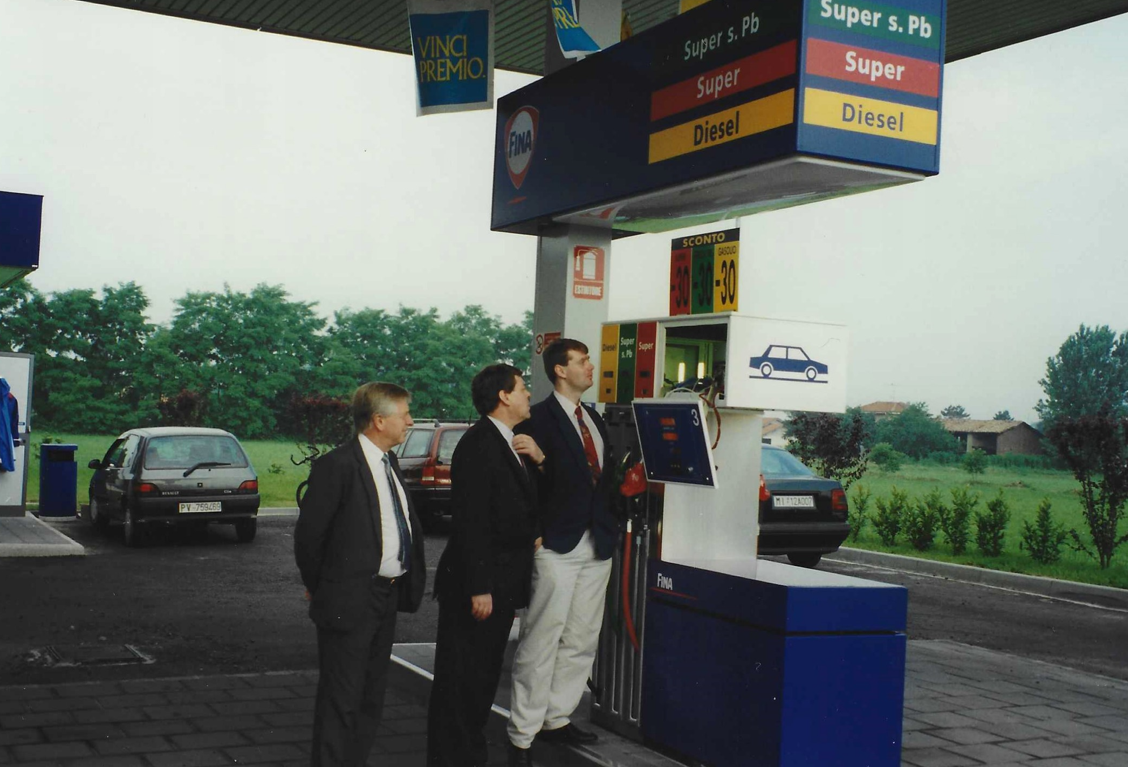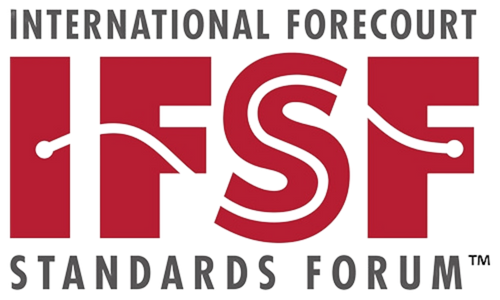Carl Jones, IFSF Programme Manager, met with Grant Calvin and Ian Nayler during the summer to reflect on the establishment of IFSF during the 1990s. Together, they delve into the motives that spurred the creation of IFSF and recount the initial strides the organisation undertook. They also discuss the obstacles encountered on the path to their overarching objective: standardisation of forecourt technologies to enhance the fuel retailing sector.
CJ: Grant – How did you come to form the International Forecourt Standards Forum (IFSF)?
GC: It was back in 1992 and I was working for Olivetti, who were the largest European computer manufacturer at the time. I had been talking with a number of the oil companies who were all struggling with similar challenges of connecting equipment from multiple suppliers. Olivetti were very committed to open standards, and I saw the opportunity to create a set of standards for the forecourt environment. I persuaded the Chairman that this would be in the interests of Olivetti to be seen as the instigator of open systems in the oil sector by opening up the market to intercommunications between forecourt systems suppliers and he agreed to sponsor kick-off meetings in November 1992. I chose Bockett Hall for the first meeting, which had the biggest private collection of Ferraris in the world and was the incentive to get the key contacts from several of the major oil companies to attend.
The first meeting was the catalyst to get agreement between the Oil Companies that there was a need to resolve the intercommunication problems in forecourt automation and that a standards organization could achieve this. We then had the challenge of how this could be achieved, funded, and organized. Olivetti sponsored my time for a number of years and provided technical computer expertise to explain and clarify the options available to achieve the agreed goals.

David Howden (Shell), Ian Nayler (Fina) and Peter Maeers (BP) at the Fina early adopter site near Brussels.
Ian – what were some of the challenges that the fuel retailers were experiencing?
IN: I was working for Fina back then and we were struggling with moving data between systems. Especially for management of wet stock, credit cards and shops – in a climate of increased franchising. Like most companies, we had an army of people working to manually move data from one system to another. We knew that we needed to automate the key processes in order to get more efficient.
Each pump manufacturer had their own proprietary protocols and so it was very difficult to mix and match a POS from one company with a pump from a different company. This was a real problem when we would take over a petrol station from one of our competitors who had different technology suppliers to us.
Also, each region had their own weights and measures requirements and so it was very costly and time consuming to certify new combinations of suppliers.

Sergio Folchitto (Agip) at the first test site in Bari.
Grant – What was it like in the early days?
GC: There was reticence, at first, from some of the representatives as there were concerns about the optics of the oil companies being seen to work together. There had been several investigations into potential anti-competitive behaviour between the oil companies and this was a red flag for some companies. We had to make it clear that the collaboration would only relate to technology standards and that there could be no discussion of commercial terms or other sensitive topics. When the IFSF was formed in 1993, we put in place rigorous processes and procedures to ensure that all meetings had defined agendas and detailed minutes. To demonstrate this the forecourt secretary Geoff Downman was even a justice of the peace in Surrey at the time.
After the initial formation of the IFSF there was very positive cooperation between the Oil Companies to find a solution to interoperability in the forecourt space.
Ian – who were the original member companies?
IN: Grant served as Chairman for the first 10 years, and I acted as President on behalf of Fina until I retired in December 1999. The other original members included Agip, BP, Conoco, Mobil and Shell and these were then joined by Texaco, Elf, Total and Kuwait later in 1993. Esso was involved from the early days but officially joined later. It was clear that the organisation would need the support of the suppliers to be successful and so we created the concept of Technical Associates to allow them to take part in the working groups and help specify the protocol development.
Grant – Where did you start?
GC: We agreed to set up a structure consisting of a management and technical level, with associate membership for suppliers to allow them to participate in technical working groups to define and develop the standards. We then set up a structure to support this in the form of a secretariat funded by the oil companies and a technical management group which we outsourced and funded from technical membership to do documentation and approvals.
We then developed a set of design criteria including the need for open systems, supplier independent with low acquisition and support cost. The Technical working group did an evaluation of the available protocols and in co-operation with the pump manufacturers organisation CECOD we chose Echelon Lonworks as our agreed standard. It was already being used extensively in developments for Building Services and at the lowest level provided a chip-based solution to layers 2-6 of the ISO/OSI communication protocol model. This then allowed us to define the protocol in software and manage the distribution and approval process efficiently and at a low cost.
The European initiative to allow weights and measures approval across EU countries, which was taking place in parallel, offered a window for initiating a standard that could be installed Europe-wide and the Oil companies were keen to take advantage of this opportunity. There was also a burning need to install high speed pumps on their current sites which drove a common goal to achieve forecourt interoperability. Shell led the way in requiring IFSF backward compatibility in their European pump tender which was published during the early years of the forum which drove a commitment by the pump suppliers to comply. AGIP were the first company to achieve a live installation at their site in Bari in southern Italy. Followed by Fina at their site near Brussels.
Ian – How did the organisation evolve?
IN: Over the years, a number of oil companies joined including Conoco, Esso and Statoil whilst others merged and some left but there was always a healthy core. The work groups developed interfaces for a variety of forecourt equipment including dispensers, pole signs and tank gauges along with testing and certification tools. Often adopting or adapting the best existing solutions.
After leaving Fina I did some work as a consultant for IFSF and worked with Echelon to promote IFSF in China. It was the time when the Chinese Govt was opening up to joint ventures with western oil companies. Lonworks was already implemented as the communications layer by the train companies in China and so it made sense to use it on the forecourt too. As a result, I helped to setup the IFSF technical support organisation in China.
Grant – How do you see the future for the IFSF?
GC: I got this idea, that became the IFSF, to work by providing a vision that solved some of the problems related to forecourt automation and addressing these to the right level of management at the oil majors. Looking forward I think that you need to project the vision for addressing the challenges that will be facing our industry in the future. You should market the strengths of the forum and look to grow the membership to provide more resources to work together.
